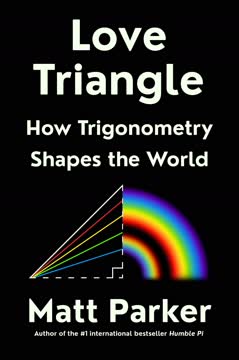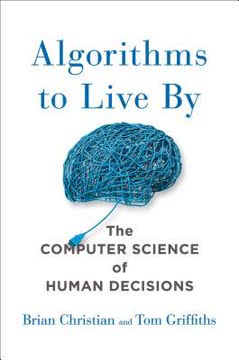Key Takeaways
1. Misconceptions about astronomy are common and often deeply ingrained
Cardinal Woosley said, quoted by Alistair Fraser on his Bad Science web site, "Be very, very careful what you put into that head, because you will never, ever get it out."
Astronomical misconceptions persist due to a combination of factors, including common sense assumptions, misinterpretation of observations, and the propagation of myths through media and popular culture. These misconceptions often start early in life and can be difficult to correct.
Examples of common misconceptions:
- Stars are visible during the day from the bottom of a well
- The sky is blue because it reflects the color of the oceans
- The Moon appears larger on the horizon due to a magnifying effect
To combat these misconceptions, it's crucial to:
- Encourage critical thinking and questioning of assumptions
- Provide accurate, accessible information about astronomical phenomena
- Promote scientific literacy and understanding of the scientific method
2. The Earth's tilt, not its distance from the Sun, causes seasons
In reality, things are even more complicated. The southern hemisphere is mostly water. Check a globe and see for yourself if you like. Water is slower than land to heat up and cool off. This plays a role in the heat budget of the Earth, too.
The Earth's axial tilt is the primary cause of seasons, not its elliptical orbit around the Sun. This 23.5-degree tilt affects the angle at which sunlight hits different parts of the Earth throughout its yearly orbit, leading to variations in temperature and daylight hours.
Key points about seasons:
- The Earth is actually closest to the Sun in January (Northern Hemisphere winter)
- The tilt causes one hemisphere to receive more direct sunlight for part of the year
- The amount of water in each hemisphere affects how quickly it heats and cools
- Precession of the Earth's axis causes long-term changes in seasonal patterns
Understanding this concept helps explain why:
- Seasons are opposite in the Northern and Southern hemispheres
- The length of day changes throughout the year
- Some regions experience more extreme seasonal changes than others
3. The Moon's phases and tides are misunderstood phenomena
So the next time you're at the beach, think for a moment about what you're seeing. The force of tides may take the water in and out from the shoreline, but it also lengthens our day, pushes the Moon farther away, creates volcanoes, eats stars, and viciously tears apart whole galaxies.
The Moon's phases and tides are often misunderstood, leading to various misconceptions about their causes and effects. The Moon's phases are a result of its position relative to the Earth and Sun, not the Earth's shadow.
Moon phases:
- New Moon: Moon between Earth and Sun, dark side facing Earth
- First Quarter: Half of visible surface illuminated
- Full Moon: Earth between Moon and Sun, fully illuminated
- Third Quarter: Other half of visible surface illuminated
Tides are caused by the gravitational pull of both the Moon and the Sun:
- Two high tides and two low tides occur daily
- Spring tides (higher highs and lower lows) occur during new and full moons
- Neap tides (less extreme) occur during first and third quarters
The Moon's gravitational effects on Earth have far-reaching consequences:
- Gradually slowing Earth's rotation
- Increasing the Moon's distance from Earth
- Influencing geological processes on Earth and other celestial bodies
4. Stars and space objects are often misinterpreted by the public
Far be it for me to disagree with His Eminence, but I think he's wrong. It is possible to yank that idea out and plant a healthier one. As a matter of fact, I think sometimes it's easier to do it that way.
Misconceptions about stars and space objects are widespread, often stemming from a lack of understanding of astronomical scales and phenomena. These misinterpretations can lead to false beliefs about the nature of the universe and our place in it.
Common misunderstandings:
- All stars are white (they actually come in various colors)
- The brightest star is the North Star (Polaris is relatively dim)
- UFOs are evidence of alien visitation (most can be explained by natural phenomena)
Correcting these misconceptions involves:
- Teaching about the vast scales of space and time in astronomy
- Explaining the different types of celestial objects and their properties
- Promoting critical analysis of claims about space phenomena
Understanding the true nature of stars and space objects helps us appreciate:
- The diversity and complexity of the universe
- The importance of scientific observation and analysis
- Our place in the cosmos and the rarity of Earth-like conditions
5. Pseudoscience and conspiracy theories plague astronomical understanding
Scientists, of course, don't usually just calculate a number and assume it's correct. They actually go out and test it.
Pseudoscience and conspiracy theories often arise from misunderstandings of astronomical phenomena or deliberate misinterpretation of scientific data. These beliefs can be persistent and damaging to public understanding of science.
Examples of astronomical pseudoscience:
- Astrology and its alleged influence on human affairs
- Moon landing hoax conspiracy theories
- Claims of ancient astronauts or alien influence on Earth's history
To combat pseudoscience:
- Promote scientific literacy and critical thinking skills
- Encourage skepticism and questioning of extraordinary claims
- Provide clear, accessible explanations of genuine scientific discoveries
The scientific method provides a robust framework for understanding the universe:
- Hypotheses are tested through observation and experimentation
- Results are peer-reviewed and subject to scrutiny
- Theories are adjusted or discarded based on new evidence
6. Space exploration and technology are subject to widespread myths
Ironically, while many people think that the Moon is too bright to observe with Hubble, it's the very brightness that allows Hubble to observe it!
Space exploration and technology are often misunderstood by the public, leading to various myths and misconceptions about their capabilities and limitations. These misunderstandings can affect public support for space programs and scientific research.
Common myths about space technology:
- The Hubble Space Telescope can see any object in space in detail
- Spacecraft can easily travel between stars like in science fiction
- Astronauts experience zero gravity because they're "above gravity"
Correcting these myths involves:
- Explaining the actual capabilities and limitations of space technology
- Discussing the challenges of space exploration and the solutions developed
- Highlighting the real achievements and discoveries made through space programs
Understanding space technology helps appreciate:
- The ingenuity required to overcome the challenges of space exploration
- The practical applications of space technology in everyday life
- The importance of continued investment in space research and development
7. Critical thinking is essential for separating astronomical fact from fiction
Science is a way of describing the universe, and the universe surely includes egg cartons and your toilet.
Critical thinking skills are crucial for distinguishing between accurate astronomical information and misconceptions or pseudoscience. Developing these skills allows individuals to better understand and appreciate the wonders of the universe.
Key aspects of critical thinking in astronomy:
- Questioning assumptions and seeking evidence
- Understanding the scientific method and its application
- Recognizing the difference between observation and interpretation
Strategies for promoting critical thinking:
- Encourage hands-on observations and experiments
- Teach how to evaluate sources of information
- Discuss the historical development of astronomical knowledge
Benefits of applying critical thinking to astronomy:
- Deeper appreciation of the complexity and beauty of the universe
- Ability to engage with new discoveries and scientific advancements
- Improved decision-making in other areas of life based on evidence and reason
Last updated:
FAQ
What's Bad Astronomy about?
- Exploring Misconceptions: Bad Astronomy by Philip Plait addresses common misconceptions and misuses of astronomical concepts, aiming to clarify misunderstandings and promote scientific literacy.
- Focus on Everyday Examples: The book uses relatable examples, such as egg balancing and the Coriolis effect, to show how misconceptions about astronomy permeate everyday life.
- Encouraging Critical Thinking: Plait emphasizes the importance of critical thinking and skepticism, encouraging readers to question their beliefs about astronomy.
Why should I read Bad Astronomy?
- Debunking Myths: The book is essential for anyone interested in astronomy or science, as it debunks popular myths and misconceptions about the universe.
- Engaging Writing Style: Philip Plait's humorous and engaging writing makes complex topics accessible and enjoyable for both novices and seasoned enthusiasts.
- Promotes Scientific Literacy: Reading Bad Astronomy fosters a better understanding of scientific principles, crucial in an age of rampant misinformation.
What are the key takeaways of Bad Astronomy?
- Understanding the Universe: The book teaches fundamental principles of astronomy, including the nature of stars and the mechanics of the solar system.
- Critical Examination of Beliefs: Plait encourages readers to critically examine their beliefs, highlighting the importance of evidence-based reasoning.
- Awareness of Pseudoscience: It raises awareness about pseudoscientific claims and the dangers of accepting information without questioning its validity.
What are some common misconceptions discussed in Bad Astronomy?
- Egg Balancing Myth: The belief that eggs can only be balanced during the equinox is debunked; they can be balanced any time with patience.
- Coriolis Effect Misunderstandings: The book clarifies that the Coriolis effect does not determine water drainage direction, which is more influenced by plumbing design.
- Seeing Stars During the Day: Plait explains that stars cannot be seen during the day from a well or chimney due to the brightness of the sky.
How does Bad Astronomy explain the phases of the Moon?
- Orbital Mechanics: The phases are caused by the Moon's position relative to the Earth and Sun, not by the Earth's shadow.
- New Moon to Full Moon: The cycle starts with a new Moon and progresses to a full Moon as the Earth moves between the Moon and Sun.
- Visualizing the Phases: Plait encourages readers to visualize the Moon's position to understand the phases throughout the month.
What is the Moon Illusion, as described in Bad Astronomy?
- Perception of Size: The Moon appears larger near the horizon due to the way our brains interpret size relative to surroundings.
- Psychological Factors: Factors like size constancy and perceived distance influence this illusion, though the exact cause is debated.
- No Physical Change: The actual size of the Moon does not change; it is an optical illusion studied for centuries.
How does Bad Astronomy address the topic of tides?
- Lunar Influence: Tides are primarily caused by the Moon's gravitational pull, creating water bulges that result in high and low tides.
- Sun's Role: The Sun also affects tides, but its influence is weaker; combined effects lead to spring and neap tides.
- Misconceptions about Tides: Plait dispels myths about tides being solely caused by the Moon's position, explaining the differential gravitational pull.
What does Bad Astronomy say about astrology?
- Astrology vs. Science: Plait argues that astrology lacks scientific validity, as it doesn't provide testable predictions or explanations.
- Vague Predictions: Astrological predictions are often vague and broadly applicable, making them seem accurate without scientific basis.
- Historical Context: While discussing astrology's historical roots, Plait concludes it is more akin to magic than legitimate science.
How does Bad Astronomy explain the concept of gravity?
- Gravity as a Force: Gravity is a fundamental force governing celestial motion, keeping planets and moons in orbit.
- Einstein's Perspective: The book touches on general relativity, describing gravity as space-time curvature caused by mass.
- Everyday Examples: Plait uses relatable examples to illustrate gravity's effects, such as tides and satellite orbits.
What are some examples of bad astronomy in movies mentioned in Bad Astronomy?
- Sound in Space: Movies often inaccurately depict sound in space, where no sound can travel due to the vacuum.
- Asteroid Fields: Films portray dense asteroid fields unrealistically; in reality, asteroids are sparse in space.
- Explosions in Space: Explosions are depicted with dramatic visuals that don't accurately represent how they occur in a vacuum.
How does Bad Astronomy encourage critical thinking?
- Questioning Assumptions: Plait urges readers to question their assumptions about astronomy, promoting skepticism and inquiry.
- Engaging with Evidence: The book emphasizes evidence-based reasoning, encouraging verification of claims before acceptance.
- Promoting Scientific Literacy: By addressing misconceptions and explaining complex concepts, it fosters scientific literacy and critical thinking.
What are the best quotes from Bad Astronomy and what do they mean?
- "Be very, very careful...": This quote emphasizes the importance of critical thinking and the lasting impact of misconceptions.
- "You can turn Bad Science...": It encapsulates the book's mission to educate by addressing misconceptions and providing clear explanations.
- "Science is a way of describing...": Highlights the essence of scientific inquiry and understanding the universe through evidence and observation.
Review Summary
Bad Astronomy receives mostly positive reviews for its engaging and humorous approach to debunking astronomical misconceptions. Readers appreciate Plait's clear explanations and enthusiasm for science, though some find certain sections repetitive or overly basic. The book is praised for correcting common misunderstandings and encouraging critical thinking. While some reviewers felt it was aimed at a general audience and lacked depth for more knowledgeable readers, many found it entertaining and informative, recommending it as a good introduction to astronomy and skepticism.
Similar Books







Download PDF
Download EPUB
.epub digital book format is ideal for reading ebooks on phones, tablets, and e-readers.




